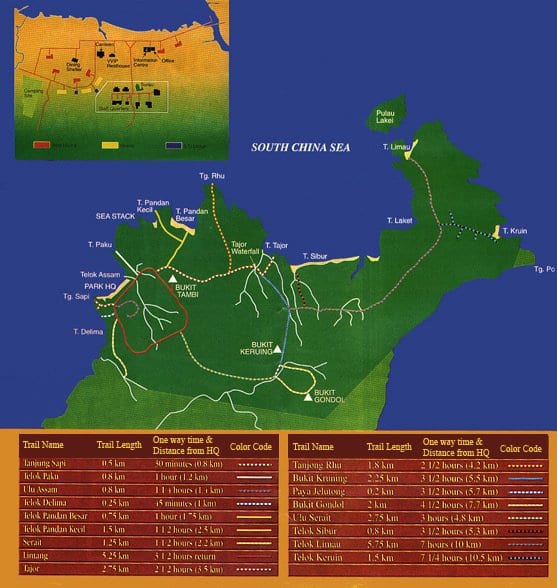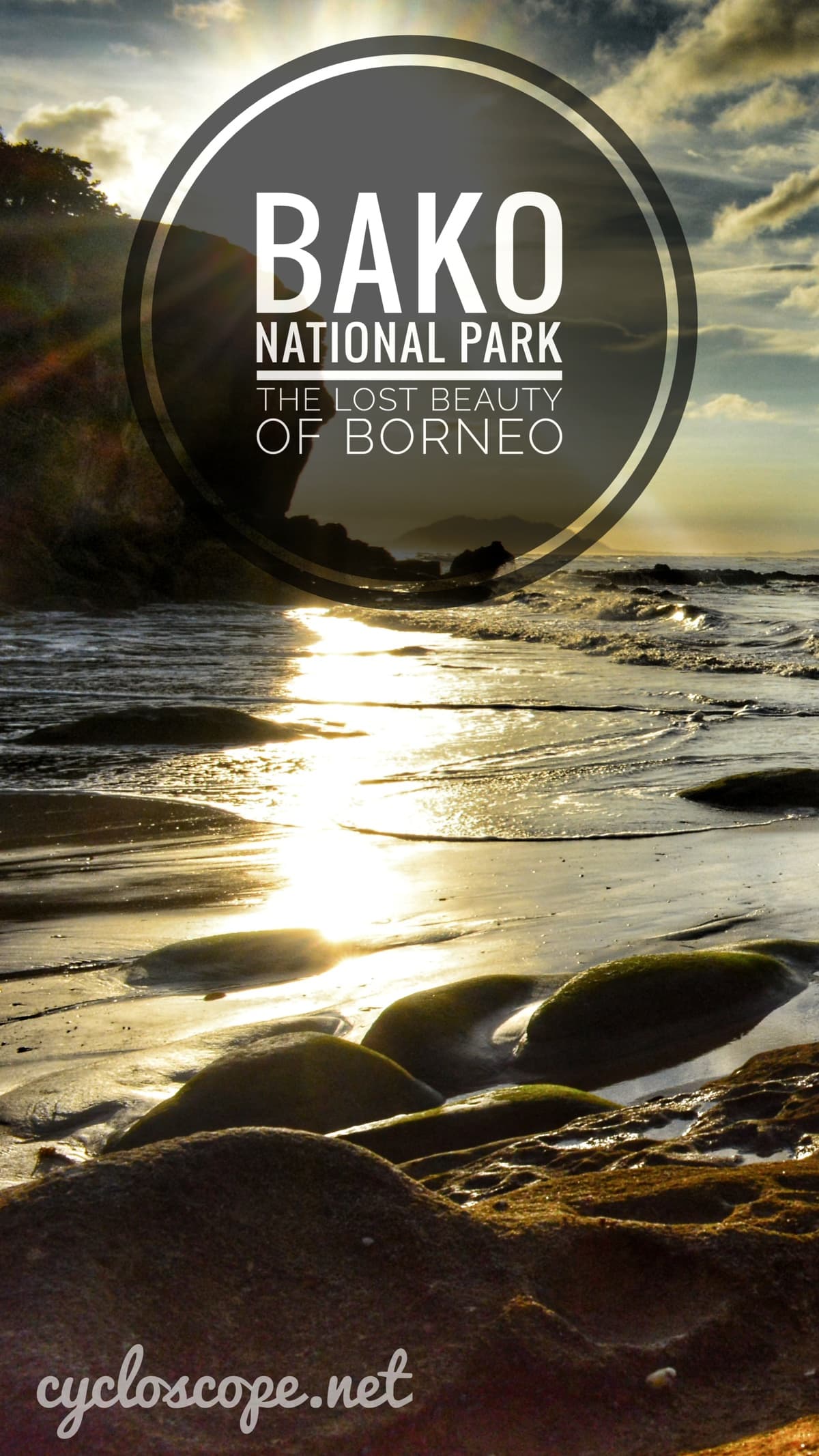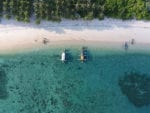Last Updated on 27 August 2024 by Cycloscope
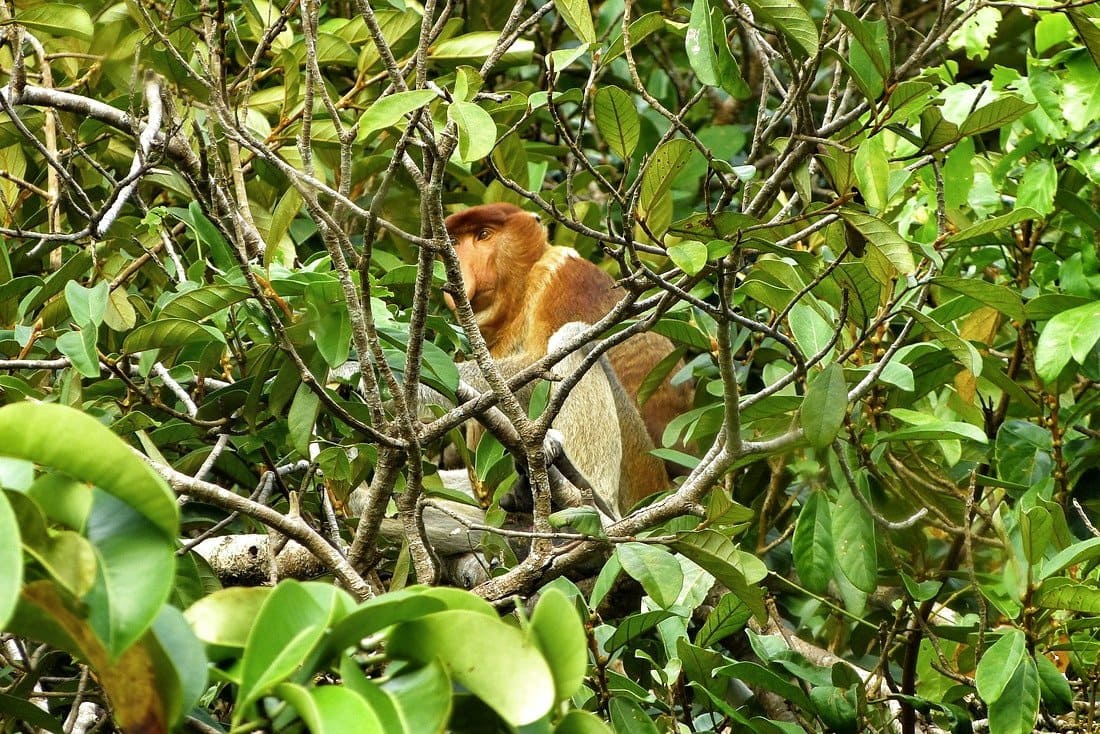
Bako National Park – The best place to see wildlife in Sarawak, Malaysian Borneo
This article is part of our “DIY Adventure Travel in Borneo” series. It’s the 7th part of our Bicycle Touring itinerary with some suggestions about things to do in and around Kuching.
Kuching means cat in Bahasa Malaysia, so no surprise if the capital of Sarawak is full of those, real ones and statues. Kuching is a small (around 350.000 inhabitants) but lively city, full of food courts, hostels, and Asian expats. Indeed we are being hosted by a group of students from Bangladesh through Couchsurfing.
Besides being a pleasant city, Kuching is mainly visited for the nearby national parks, Bako, Gunung Gading, and Kubah, or the Orangutan in Semenggoh Rehabilitation Center.
Kuching City

Even if not a famous tourist destination like Penang or a hipster capital like Ipoh, Kuching is a very pleasant and fun city.
The life in Kuching mainly boosts around its nice riverside, called waterfront by the locals, very near is Jalan Carpenter where many hostels and bars are, a good base to explore the area.
Another highlight is its many food courts, some really big and fascinating, that make Kuching rival Penang as the food capital of Malaysia.
TopSpot food court is the one closest to the waterfront and has a great an super cheap choice of almost everything, with seafood being the specialty. There are also many interesting museums in Kuching that are worth visiting.
We got to Kuching by boat from Sibu, an interesting journey that can be quite bumpy during the monsoon season.
Bako National Park
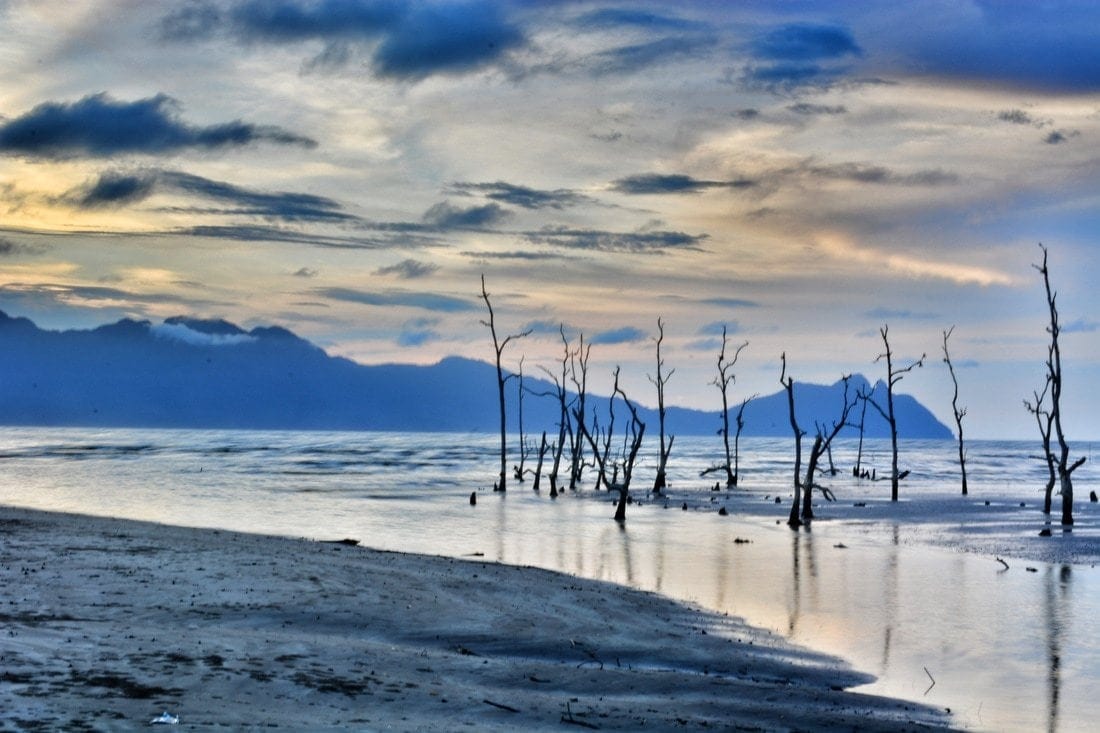
Bako National Park is the most famous park in Sarawak, and for a good reason! It’s here that most rare animals can be found, such as proboscis monkeys, which can be found only in Borneo, silvered langur, plantain squirrel, Bornean bearded pig, monitor lizards, and nocturnal creatures like colugo, pangolin, mousedeer, tarsier, slow loris, palm civet, and many others… certainly one of the best places where to see wildlife in Borneo.
Bako was founded in 1957 and is the first National Park of Sarawak, sadly it’s also the smallest (but no worries there’s a lot to explore).
It sits on the north tip of the Muara Tebas peninsula, just 20km north of Kuching, and it’s also famous for its spectacular and weird limestone rock formations.
While many people visit the park on a day trip we strongly advise to overnight there, for several reasons:
- more time to see the park
- spend one night listening to the sounds of the jungle
- most of the animals go out at certain times, proboscis monkeys for example apparently show themselves in the early morning and at sunset, in both cases very difficult to be on time if on a day trip, due to the fixed schedules of the boat. Indeed most of the visitors we met who were on a day trip didn’t see any monkey
- sleeping in the park is really cheap
- during the monsoon season, the last boat back is at 3 pm, because of the tides that make the sea too rough, definitively too early!
Getting there, entry fees and accommodation
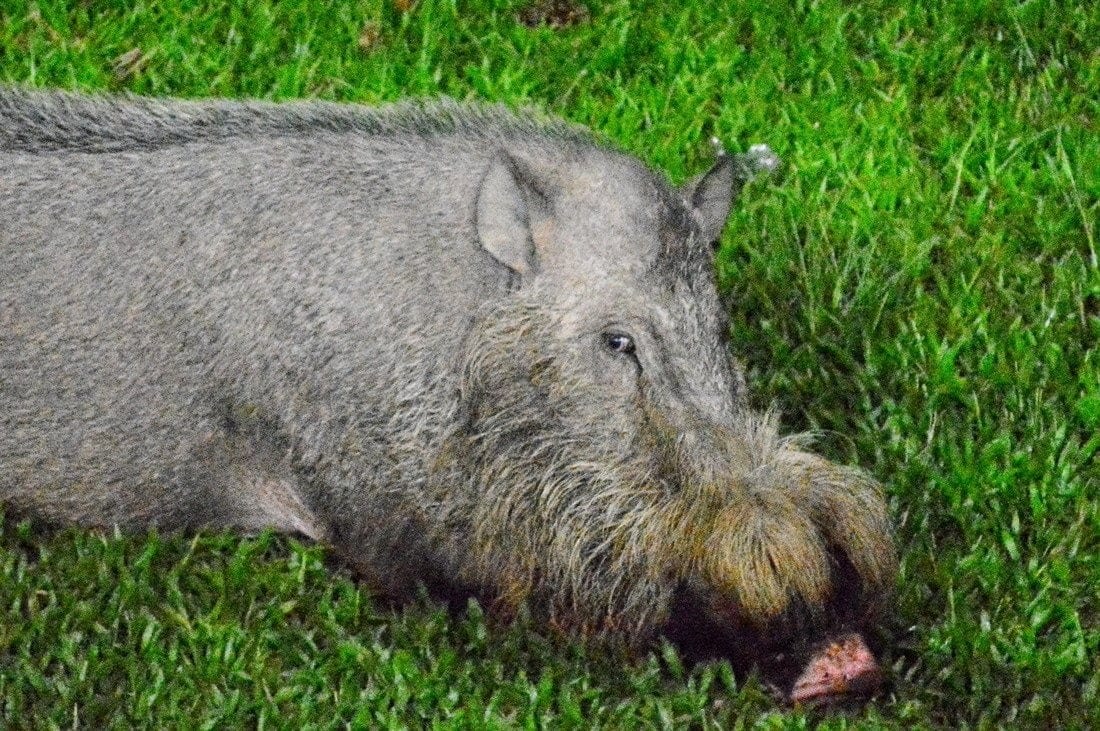
We wake up very late and joining the Italian slow pace to those of Bangladesh we can’t leave the house before 2 PM, anyway due to Karim’s reckless driving we make it in time to get on the last boat to the Bako National Park.
The entry fee is 20MYR per person and the price for the boat is 20MYR for foreigners and 15MYR for locals, Karim and Adnan, our Bangla hosts just pretend to be locals so we get a little discount.
The national park can only be reached by sea, which is a very rough sea during monsoon season. The little boat tries to avoid giant waves and when it can’t we just fly, literally, and land on the water abruptly, pretty exciting, on the verge of scary though, the boatman is very focused.
We arrive around 4 pm, and immediately at the small pier, there are many macaques and big bearded boars, both very accustomed to people, almost posing for pictures.
We take a 4-bed room in the park dorm for 100MYR, 25 ringgit per person, not bad.
While we are at the reception desk a macaque comes in and tries to steal Elena’s bag, and when she reacts abruptly the monkey shows its fangs and threatens her, the girl at the desk comes with a broom and starts beating the monkey, a cool welcome. Nothing compared to this monkey attack in Angkor Wat though…
It’s also possible to camp in the park for 5MYR per person, must bring your own gear and be very careful of the annoying macaques, seriously.
Teluk Pako and the proboscis monkeys
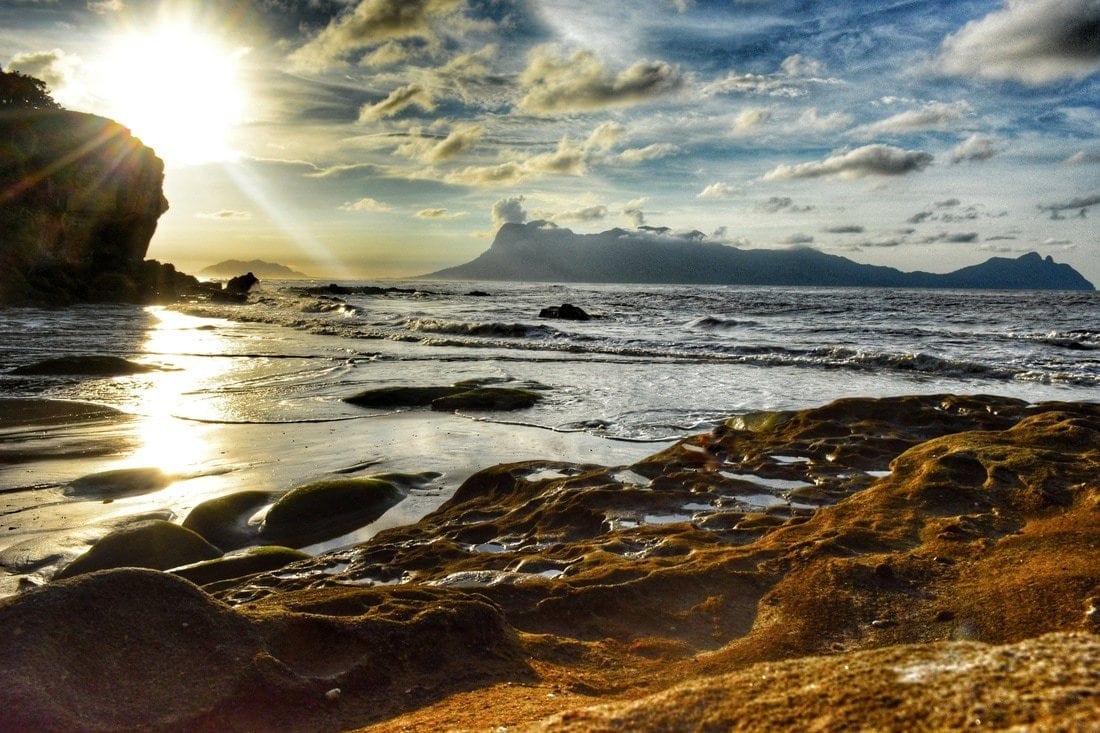
We quickly head to Teluk Pako (1.2km) one of the shortest treks that leads to a beautiful beach where apparently a big group of proboscis monkeys lives. And indeed we see them, are many, males, females, and cubs of different ages. Across the planet these monkeys can only be found here in Borneo, it is exciting. They are reddish, and have long arms, and big bellies, when the people of Borneo first saw the Dutch people they immediately associated them with those monkeys.
Males are particularly funny, with this huge nose, curious facial expressions, and long, thin pendulous penis.
We got very lucky since many people never get to see them, we are told that sunset is the right moment, the air is cooler and monkeys go out to feed.
We get back to the park headquarters and eat in the local canteen, food is not so good and expansive for Malaysian standards. In the evening we go for a little walk on one of the wooden walkways near the HQ, It’s pitch dark and the jungle is full of creepy sounds, we proceed maybe one km but we already met several forks, afraid of getting lost in the heart of darkness we cowardly go back to our room.
Pandan Besar
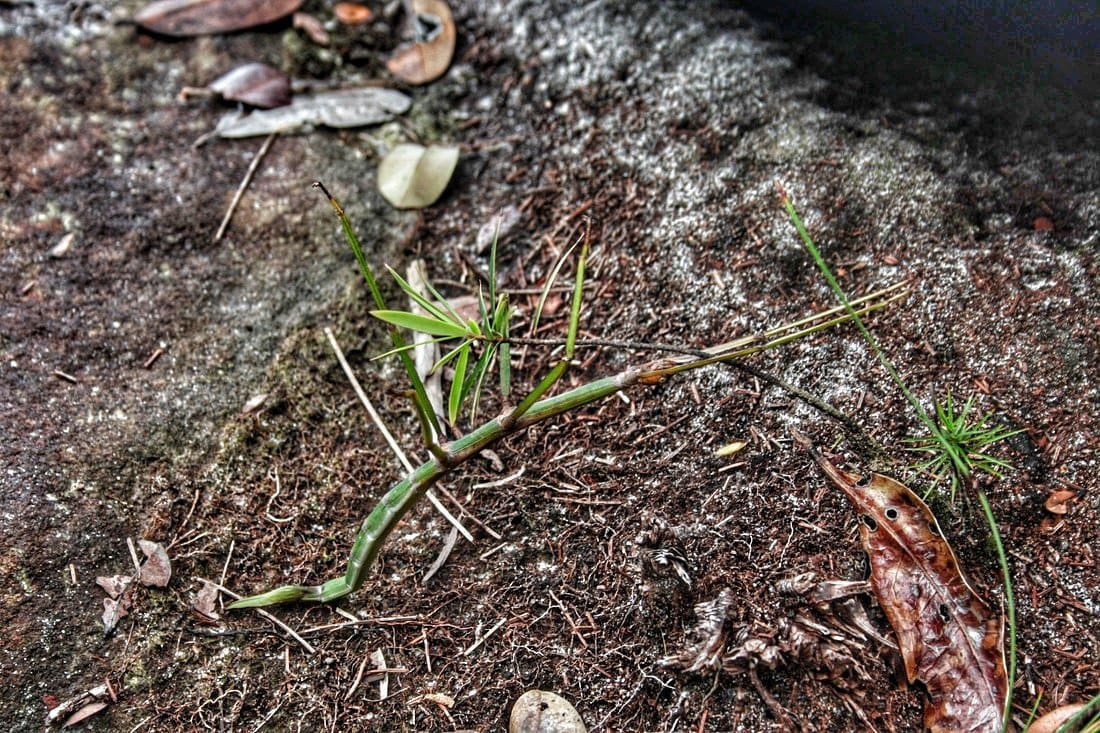
The next morning we decided to head to Pandan Besar, the most famous beach in Bako National Park, where the iconic limestone pinnacle is. It’s a 1.75km trek with few steep parts but mostly easy.
Anyway, it takes us around 2 hours because of too many photo stops. this time we encounter no special animals, to have the best chances to see the shy inhabitants of the park hiring a guide is a must, he will take you to the right places. We could have enjoyed more seeing the monkey fishing down the beach if we had binoculars. Check this list of the best travel binoculars.
Instead, we see a huge stick insect (Phasmatodea), at least 20cm long, immediately when it perceives our presence it gets in a camouflage mode, perfectly blending with the surrounding plants, without having seen it moving we wouldn’t ever notice it.
We also see plenty of beautiful carnivorous plants, at least two species of pitcher plants, and a few sundews.

We arrive at the viewpoint, a sandstone rocky surface overlooking the beach, which to our disappointment we realize cannot be reached!
By the way, they say it’s not safe to swim on Bako’s beaches because of the many sea crocodiles.
Another little disappointment is the famous pinnacle rock, it can be seen but is very far away and smaller than it appears in pictures. To get a good view of it you need to hire a boat. Anyway, the sandstone balcony where we are is very peculiar, the view is amazing and we lose the sense of time watching macaques down on the beach busy with their daily business, eating stuff they find in the sand, probably hermit crabs, and sometimes fighting each other.
Our plan was to head to Tajor waterfall, around 3km further deep in the park. The waterfall is nothing special but it has a nice swimming pond. By the way, the last boat back is at 3 pm and we probably won’t make it. We get back and take the last boat for another bumpy ride.
Tomorrow we’ll be back on the bike saddles, saying goodbye to Kuching to head slowly towards Indonesia, country number 18.
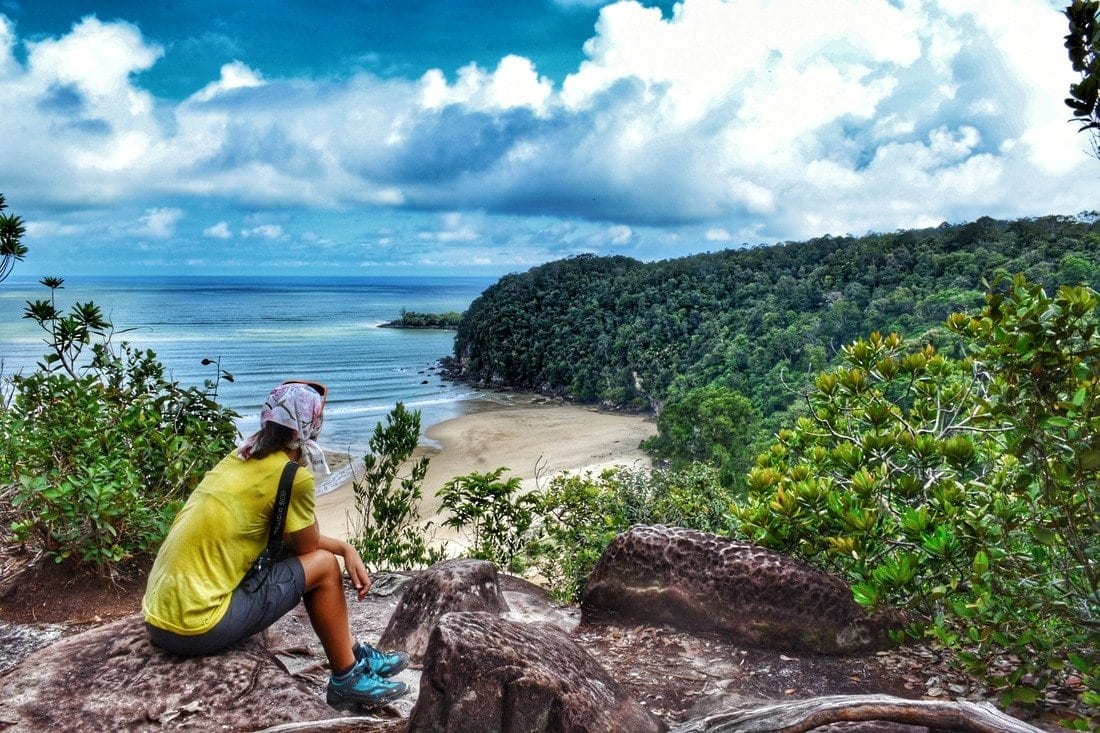
Like this article? Share it!
Have thoughts about it? Comment!
Our previous adventures in Borneo
- pt1: from Kota Kinabalu to Tenom, crossing the Crocker range
- pt2: Jungle Train, from Tenom to Beaufort
- pt3: crossing Brunei by bicycle
- pt4: around Miri, Lambir Hills and Logan Bunut national parks and Tusan Beach
- pt5: the caves of Niah National Park
- pt6: from Belaga to Kuching by boat
- pt7: Kuching and Bako National Park (you are here)
- pt8: Rafflesia in Gunung Gading National Park
- pt9: Overland Border crossing from Sarawak into Kalimantan, the secret Aruk border
- pt10: Sambas, the wooden Venice of Indonesian Borneo
- Reportages
- Chap Go Meh in Singkawang: piercing yourself with swords to please your Gods
- Hydroelectric devastation in Borneo
- part 1: Interview with SaveRivers
- part2: a visit to Sungai Asap
- here are some general hints to budget travel in Borneo (by bicycle or not)
Map of Bako National Park’s trails
